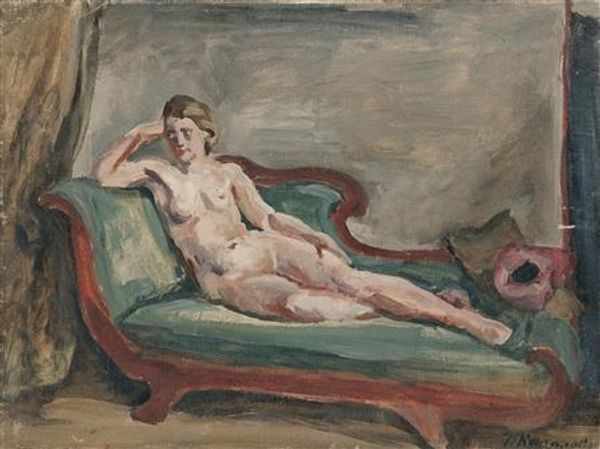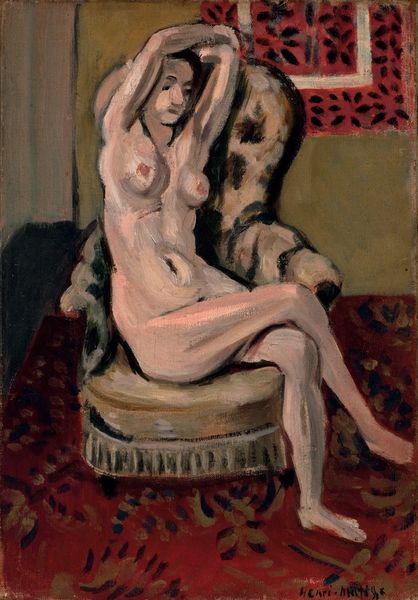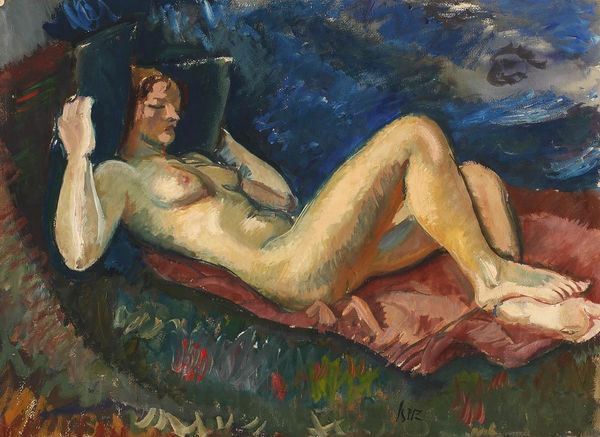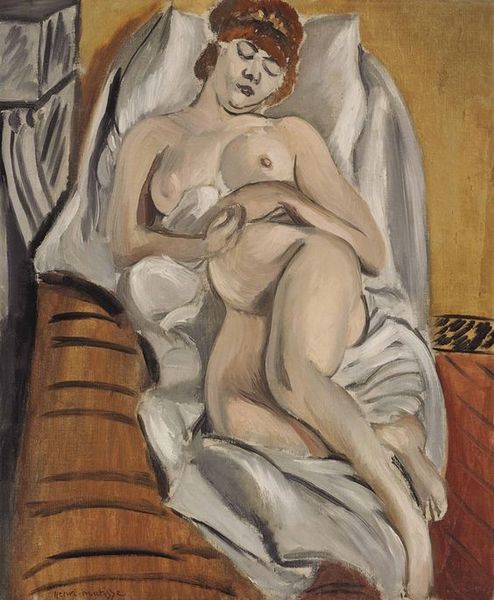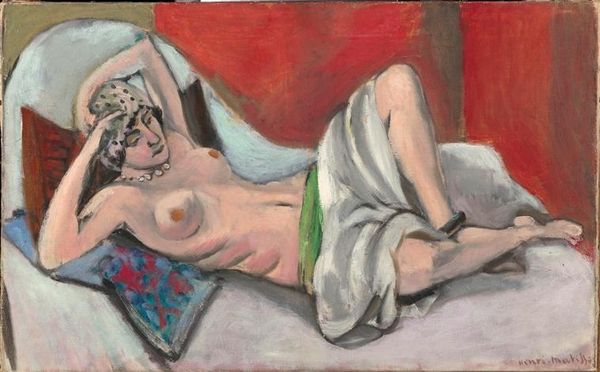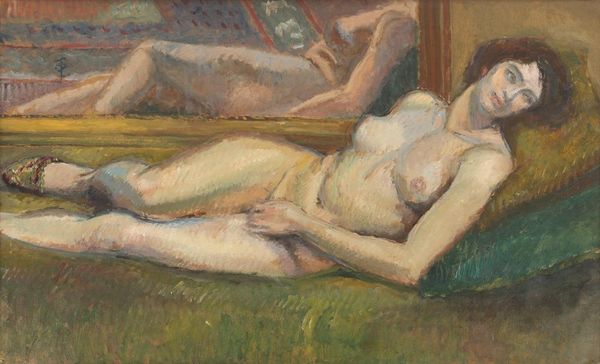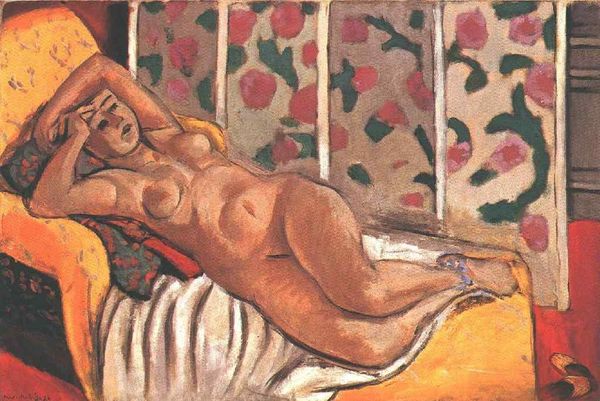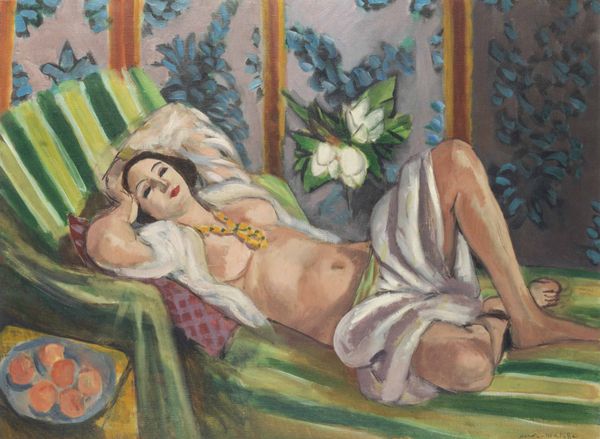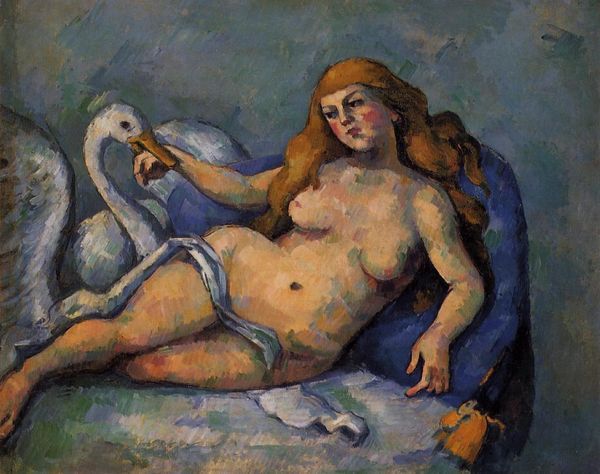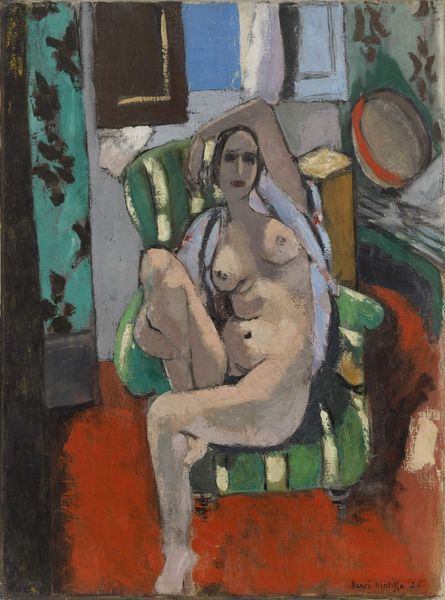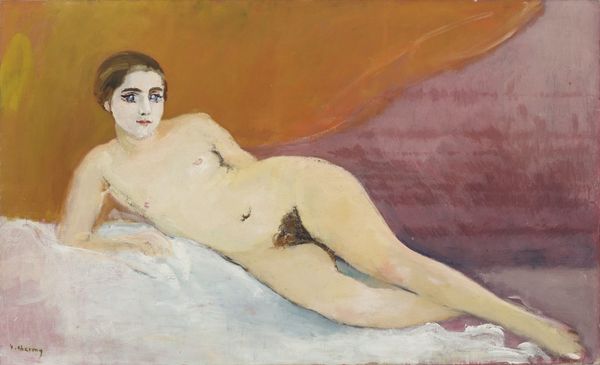
oil-paint
#
portrait
#
oil-paint
#
soviet-nonconformist-art
#
figuration
#
oil painting
#
genre-painting
#
nude
#
realism
Dimensions: 65 x 82.3 cm
Copyright: Pyotr Konchalovsky,Fair Use
Editor: Here we have Pyotr Konchalovsky’s “Woman on Sofa” from 1930, created with oil paint. The woman's pose, her sort of languid stretch, gives it this very relaxed, almost sensual feeling, don't you think? What's your take on it? Curator: It’s interesting you pick up on the sensual aspect. When I look at this painting, especially considering it was made in 1930s Soviet Russia, I see a complex negotiation with the shifting ideals around women’s roles. The Soviet era aimed to liberate women, but artistic representations were still often fraught with traditional, sometimes contradictory, imagery. What does the 'relaxed' pose mean in that context? Is it empowerment, objectification, or something else entirely? Editor: That’s a point I hadn’t considered. I was mainly reacting to the way the light falls and the soft colors. Does the Soviet context change how we interpret her nudity? Curator: Absolutely. Public nudity had different connotations depending on class and gender in early Soviet ideology. A nude worker might symbolize liberation and physical strength, a new, Soviet ideal, but here, situated on a sofa in what appears to be a bourgeois interior, the nude woman evokes a different, perhaps more traditional, narrative. Do you notice anything else that pushes you in one direction or another? Editor: I guess I'm struck by how ambiguous it all is. There is this very old style colliding with the promises of a modern society. Curator: Exactly. Konchalovsky is walking a fine line, isn’t he? He seems to both embrace and critique the traditional artistic representations of women. Looking at it through the lens of intersectional feminism allows us to understand how multiple social and political identities converge and influence this work. Editor: That makes me look at it so differently. What I thought was just a relaxed pose suddenly carries so much more weight. Thanks! Curator: And thank you, for prompting a reading that acknowledges those historical tensions and its potential reverberations even now.
Comments
No comments
Be the first to comment and join the conversation on the ultimate creative platform.
